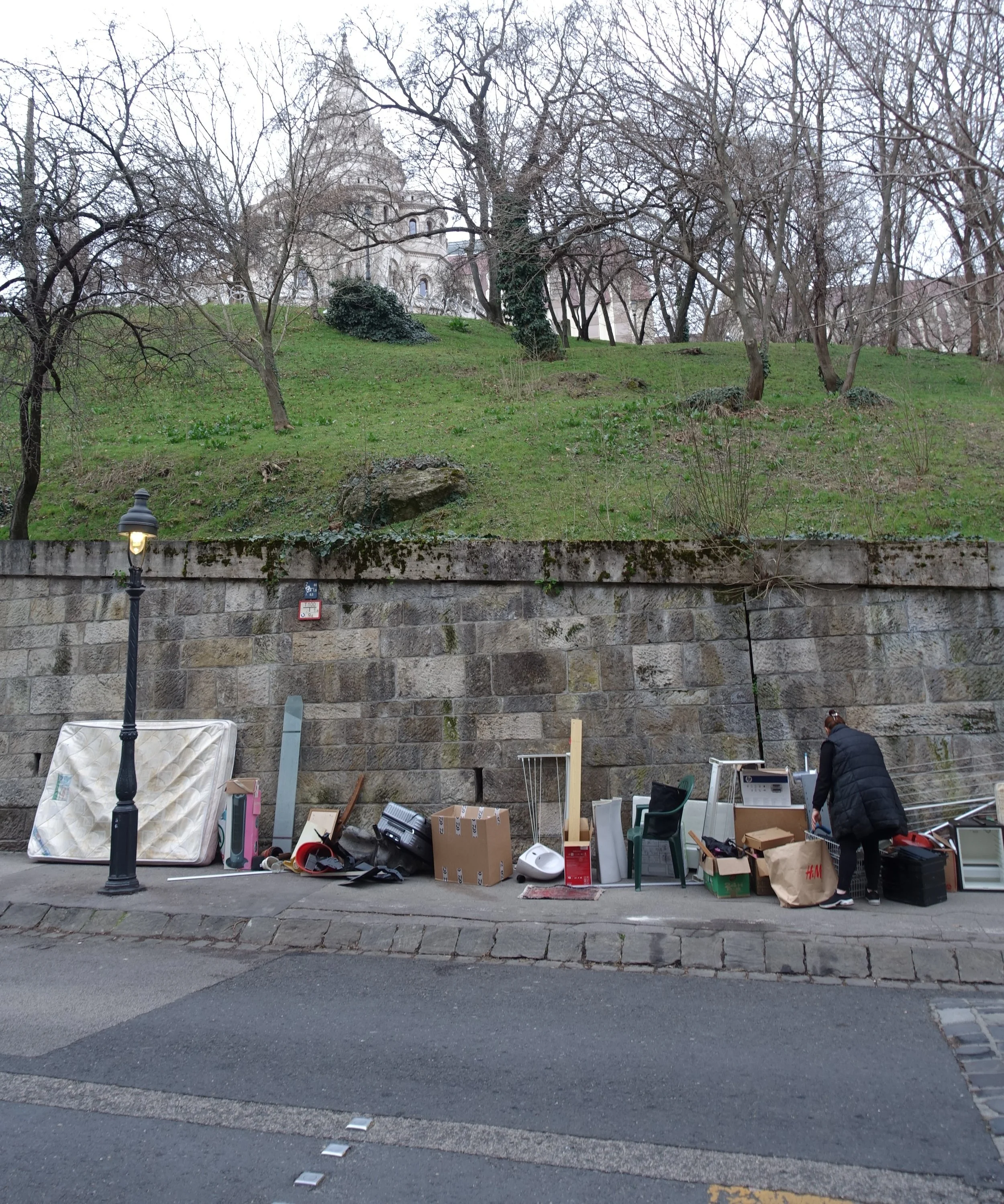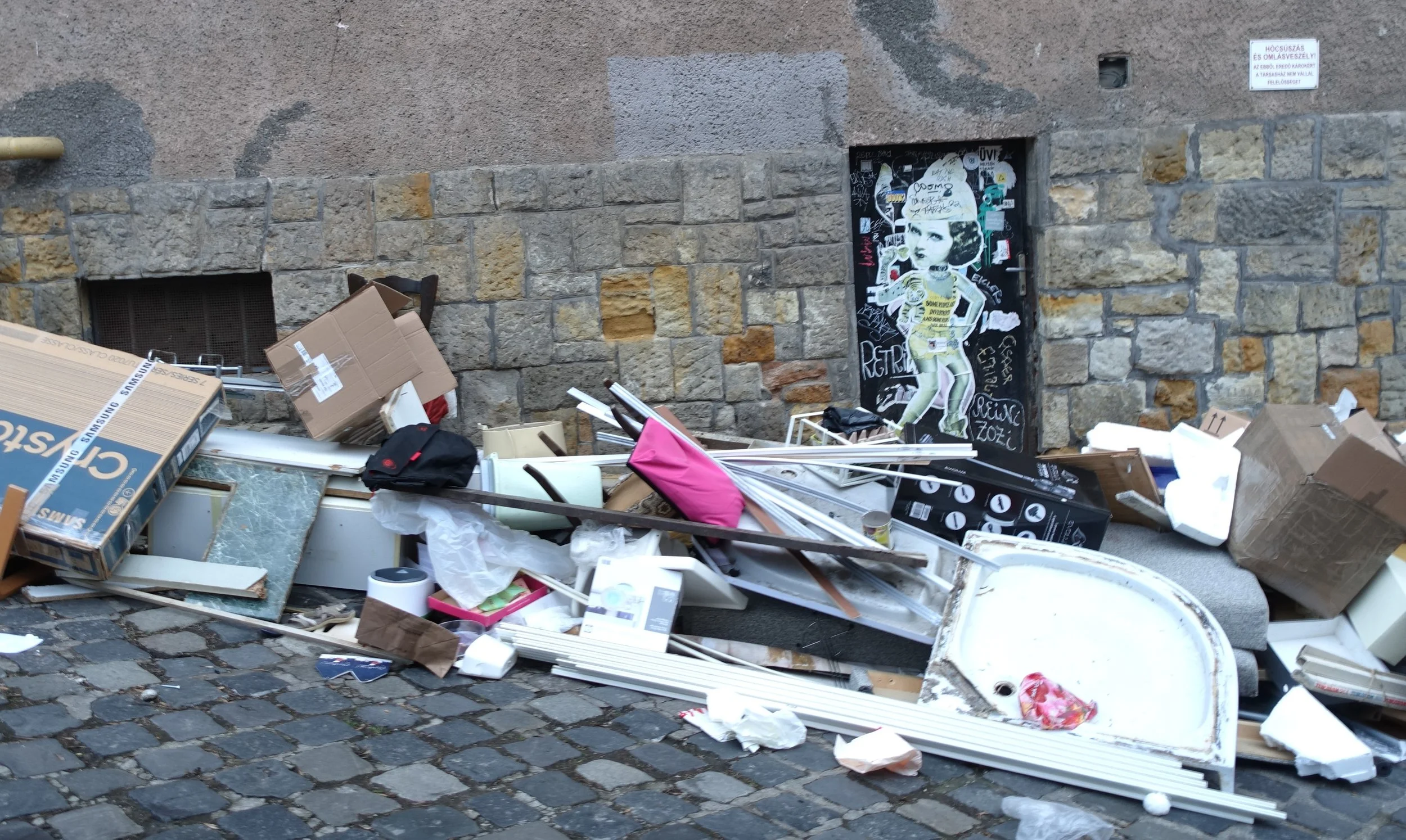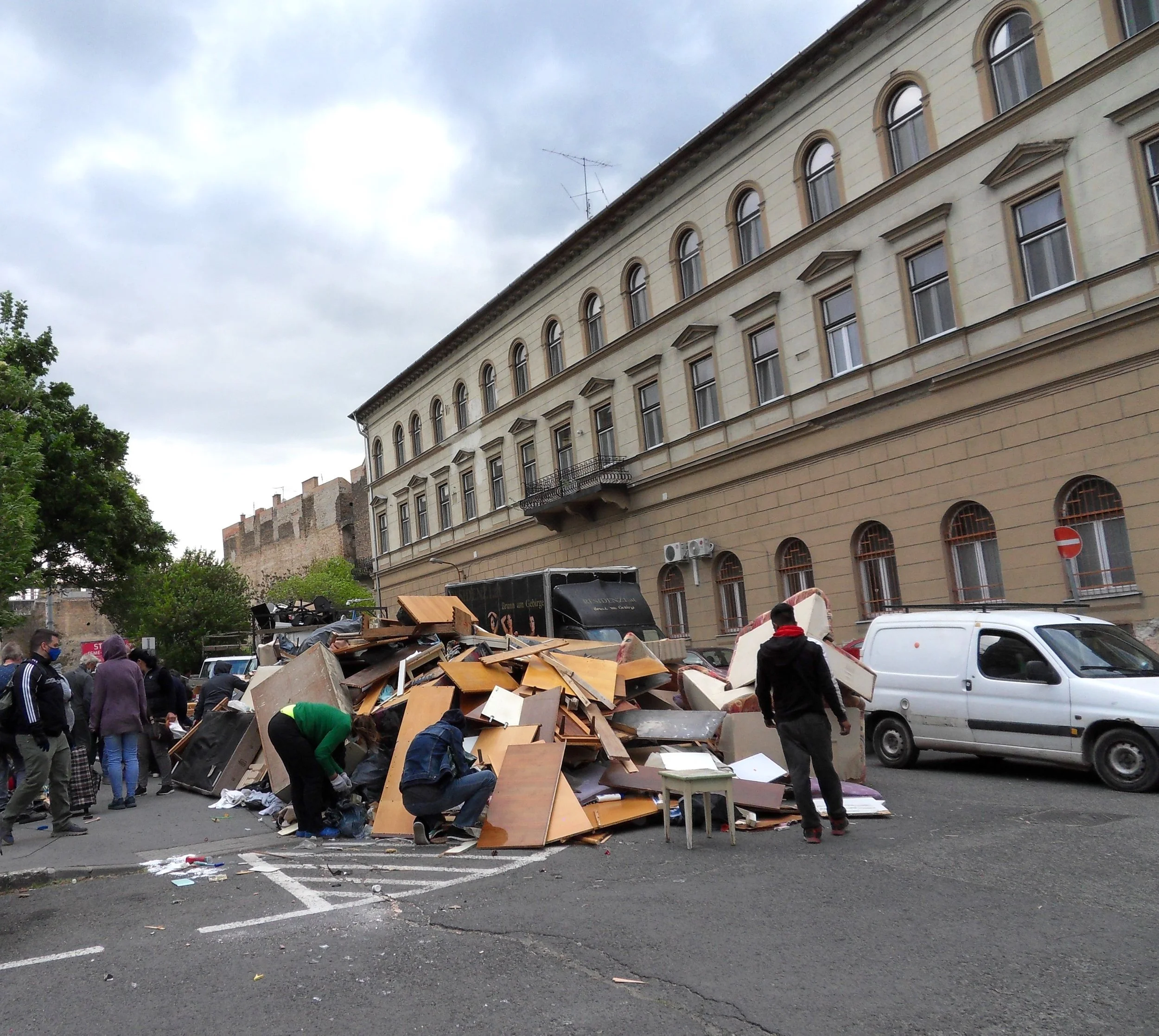Where there’s muck, there’s brass!
So goes the old expression to illustrate that money can be made or found in the most unlikely of places. And the Lomtalanítás is an excellent case in point. Lom doesn’t translate precisely into English but it describes items that could be described as junk or usable rubbish. The Lomtalanítás is the annual arrangement by which residents and business owners of Budapest can dispose of unwanted things that are too big or unsuitable for the weekly collection.
In an arrangement dating back to the nineteen thirties, to reduce fire risk in cellars and lofts, each city district is allocated a specific day per year when people can put out unwanted items on the pavement with the knowledge that early the next morning, the local municipality will organise their removal. It’s a free and convenient opportunity to get rid of all those things simply too big, awkward or expensive to otherwise dispose of. The process ranges from local residents getting rid of ancient clutter through to businesses disgorging piles of sad old office furniture. As the operation works its way around the city, the Lomtalanítás offers a rich opportunity for urban foraging.
Where the annual waste collection in Budapest becomes distinctive, is in the role played by unofficial collectors who systematically visit each district ahead of the contracted refuse workers and take away much of value. Where there’s muck there’s brass and apparently there’s a lot of money to be made from recycling waste, including metal, wood, cardboard and clothes. Most of the unofficial collectors are men of Roma heritage, although not all of them. Most are Hungarian citizens, although again not all, as foreign registration plates can sometimes be observed on their trucks.
According to the local bylaw, residents shouldn’t place anything on the streets until after 6 pm, the evening before the official staff carry out their work. In practice the throwing out of goods begins from noon onwards and the organised foragers arrive by mid- afternoon. Technically, once waste is left on the pavement it belongs to the Budapest municipality and the work of the unofficial collectors is considered criminal activity. Having encountered many a Lomtalanítás, I have never seen a police officer present to enforce any of the local laws, although the collectors are clearly aware of their illegal activity. If you point a camera in their direction, you will be told where to go and what to do, in no uncertain terms.
Once an item is on the pavement it becomes fair game for all and sundry. There are bargains to be had by the passerby but once the unofficial foragers have got hold of something, it’s a case of ‘finders keepers’, unless you are prepared to buy it off them. I was once tempted by a pair of candle holders near the Corvin Cinema in district eight, but the new owner of said items asked an excessively high figure and couldn’t be bargained down. My obvious foreignness no doubt inflated the price somewhat.
Women, children and elderly collectors stand guard over bulky items identified for later collection by burly men in dusty clothing. Where there are hidden treasures, such as printed circuit boards in old televisions, they may be noisily removed in the street and the broken screen or other waste left behind for the council to remove. As rightful owners of the property the latter are ‘losers weepers’ perhaps? By early-evening much of the unofficial collection is organised and a succession of vehicles arrive to remove the most valuable treasure. White goods are normally the first items to be driven away. The council contracted service is left to collect the remaining rubbish the next morning. Mostly destined for landfill or burning I suppose.
Strolling through the First District Lomtalanítás this February was a noisy experience. There was a regular crunching sound as junk was distributed on the pavement, competing with church bells and skate boarders ricocheting off benches and steps in the Tabán area. The surprisingly high number of tourists so early in the year, strolling down from the Fisherman’s Bastion in the Castle district were caught up in the mayhem and many looked confused at what was happening around them. The steep, heavily parked streets made it difficult for the flatbeds and other trucks to find suitable spaces for the organised foragers to load into. In a less well-heeled part of Víziváros, enthusiastic residents, mostly poor looking pensioners, searched through a huge pile of clothes that had appeared to be already earmarked for new owners. The overseeing Roma women and children could only look on as the more numerous locals grabbed the best stuff first.
Directly across the Danube from the Parliament, a mother and daughter guarded an interesting assortment of materials. I was impressed by the quality of a painted wooden door that they sat behind. They asked me if I had any ‘Lom’ for their collection. Perhaps some clothes? When I explained that I didn’t live locally, the mother asked for money to buy food for her teenage daughter, who was clearly surprised to be described as pregnant. I politely declined the request as I mostly do. So many people ask for money on the streets in Budapest, that compassion fatigue easily takes hold.
At Iskola utca the rubbish is placed, for some unknown reason, around an ancient tree like decorative mulch. In district nine, I remember collectors organising discarded family portraits and belongings against a wall as though recreating someone’s back parlour. Old memories found new owners and gained new meaning. Without any fear of the authorities, there is a confidence expressed by the unofficial collectors, a sense of entitlement even. They appear quite content to sit in the street all evening on camp chairs or broken furniture, overseeing new possessions while they await their transportation.
In the more affluent parts of the city there is definitely a sense of unease about the process. During my recent stroll I stopped on Batthyány utca , where an artist had had a huge clear out. There were abandoned sketches, half-finished oil paintings, numerous used palettes and broken frames left on a street corner. Among these items, was a collection of hardly opened paperbacks well worth reading. Was I looking at ‘lom’ from some famous artist, I wondered? Not from an impoverished garret, that was for sure. A well-dressed woman looked in disapproval while I went through the book titles. Indeed, there must be something unsettling about having strangers lurk around your doorstep as you bring out your ‘lom’'; grabbing the most desirable pieces before anyone else can or taking up your parking space with their truck. My impression though, is that most people think it’s a price worth paying to get rid of unwanted objects freely and conveniently, with the disturbance lasting only one day each year.
A curious sociologist might have a field day interpreting this city in terms of what residents dispense on its pavements during the annual clear out. As a casual observer I see no particular patterns of wealth in the distribution. There are objects of interest discarded in every district and stories of gold and money left out mistakenly or not, have entered local folklore. The great levellers are visible everywhere: mattresses, sinks and toilets. My fictitious sociologist might discover something different about Budapest compared to say London or Paris: namely that the inner districts here are more socially diverse. As the communist system collapsed in the early nineteen-nineties, many ‘council tenants’, the majority of the population, could buy their homes from the state at bargain-basement prices. People bought apartments in desirable areas for as little as three or four thousand UK pounds. Having scraped that money together once to become home owners in the new capitalist system, many have found the subsequent costs associated with ownership excessively high to bear. This can be witnessed in the poor condition of many residential buildings across the capital.
What probably prevents huge-scale gentrification is that there is no property tax in Hungary to drive poorer people into cheaper areas. Consequently, there are pensioners and other less affluent people dispersed through the inner areas, particularly on the Pest side of the Danube, who would simply be unable to meet the living costs of a comparative western European city. Here they get by with careful budgeting, soup kitchens and support from family members. Those barely above the bread line are frequently seen going through street and household bins in search of food and clothes. Foraging of a most essential kind. Another feature of Budapest is the absence of alternative accommodation. It’s said that there is more social housing in Vienna than in the whole of Hungary.
The more modern and well-off parts of the city, particularly in Buda, are rarely visited by the poor and desperate and the arrival of shabby, unofficial collectors is highly noticeable. But it would be wrong to label all organised foragers as poverty stricken. As already stated, where there’s muck there’s brass. One wonders why the municipality doesn’t try harder to capitalise on the hidden wealth deposited on city pavements each year? Perhaps the whole situation is more nuanced. Possibly, the organisation contracted for the Lomtalanítás simply can’t cope with so much waste generated by a modern, ‘throw away’ society. And that it suits them for others to complete a significant part of their work. For the organised foragers, it produces a regular income and maintains a way of life.
As far as I can see, no one’s complaining too loudly about illicit activity and the police would surely argue that they have more important things to do anyway. Maybe that’s why the law enforcement agencies are conspicuous in their absence. The manner in which the Lomtalanítás currently happens is noisy, untidy and shrouded in illegality- but still a comfortable arrangement for all concerned. Including us residents- who at the end of the day, manage to get rid of our unwanted stuff and if we are so inclined and sharp-witted enough- even find some new clutter!
Please see Annual Clear Out in my portfolio section for further images of the Lomtalanítás.


